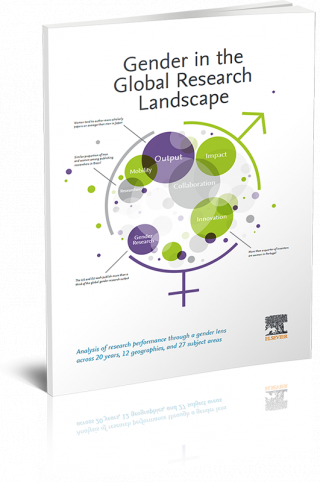Tackling Gender Bias at Work: Some Key Articles

In this article, we have collected some of our best content on tackling gender bias at work. Whilst some progress has been made over the past decades, several recent reports and surveys suggest that we have a fair way to go, to achieve gender parity. For example, some key findings in the Gender in the Global Research Landscape report which draws upon Scopus data and unique gender disambiguation methodology, show that women in academia are generally less internationally mobile than men and are less likely to collaborate internationally on research papers. Furthermore, the recently published Gender Pay Gap Report figures in the UK highlight a stark gap in average pay between men and women, in many companies. To continue the awareness and dialogue on this topic, we also include practical steps for change, cross-cultural experiences and the contributions of dynamic female tech pioneers to inspire you.
Introduction
The Women in Business 2018 Report by Grant and Thornton, finds global businesses have taken one step forward and one step back when it comes to gender diversity. While the number of businesses with at least one woman on their senior leadership team has significantly increased, the proportion of senior roles held by women has marginally declined. This disparity is echoed in senior academic positions, with science, technology, engineering, and maths (STEM) fields performing considerably worse than the commercial business sector.
In the UK, the government commissioned a Gender Pay Gap Report to further its understanding of gender disparity in pay. It required all employers with more than 250 workers to disclose differences between the average hourly pay rate and bonuses between male and female workers. The underlying premise being that — large disparities in average pay are indicative of women doing more of the less well-paid jobs than men. Note that this is different to unequal pay, whereby men and women are paid differently for equivalent roles. The latter has been against the law in the UK since 1970.
The UK government has stated that it will produce sector-specific league tables, placing pressure on employers with significant average pay differences to bridge the gap. With the deadline for submission just passed, (March-April 2018), over 10K employers have submitted data. There have already been incidences where employees from high-profile companies are seeking explanations for the significant differences revealed, with scrutiny stretching to the media. Preliminary analysis of the data suggests that 8 out of 10 employers have a higher average hourly pay rate for men than women. The construction, finance and education sectors reported the highest pay gaps. Bonus pay gaps were highest in the finance and education sectors.
In light of recent developments, we’ve compiled our best articles on gender bias to help assess progress, put forward practical steps for change in the workplace, and provide inspiration from women who’ve helped break the mould.
Key Articles on Gender Bias
Gender bias in the workplace: Practical steps to take for change
We discuss what positive steps women and men can take collectively, to tackle the barriers to success. We share insights from experts on how to progress, ranging from dealing with the impact of unconscious bias, to overt discrimination.
Gender Bias and the ‘glass cliff’ phenomenon: Interview with Professor Michelle Ryan
Since its discovery, the concept of the ‘glass cliff’ has been widely discussed, forming an integral part of the understanding of women’s leadership positions. It was named by the New York Times as one of the top 100 ideas that shaped 2008. We spoke to Professor Michelle K. Ryan, who first described the glass cliff phenomenon, about her views on diversity in the workplace.
Gender Bias: Perspectives from an Indian researcher abroad, excelling in STEM
In this article, we take an international view and talk to Indian-born Nikita Hari, entrepreneur and Ph.D. student in the field of electrical engineering. She compares and contrasts her cross-cultural experiences as a researcher in a traditionally male-dominated field, including social aspects, moving from her native India to the UK.
Women in Tech: Pioneers, Past and Present
In this article, we recount the crucial, often overlooked role, women have played in the development of technology. We look at contributions throughout history, including present-day trailblazers, who are continuing to push the boundaries in the tech industry.
Summary
There are multiple steps that need to be taken to help improve the slow rate of progress towards global gender parity in the workplace. Employers need to take positive actions to set the tone of an organisation. Diverse leadership styles and ideas of merit, not just those with traditional male characteristics, should be encouraged. Men and women have a joint responsibility to address gender bias at work, using innovative approaches to combat unconscious bias, including amplification and mentorship.
There are many examples of women, past and present who have been defying the trends, serving to provide valuable role models to those around them. Their experiences and insights, particularly in sectors like STEM where the bias is stark, can help enlighten others. The change is in the right direction, albeit with a need for considerable acceleration.
